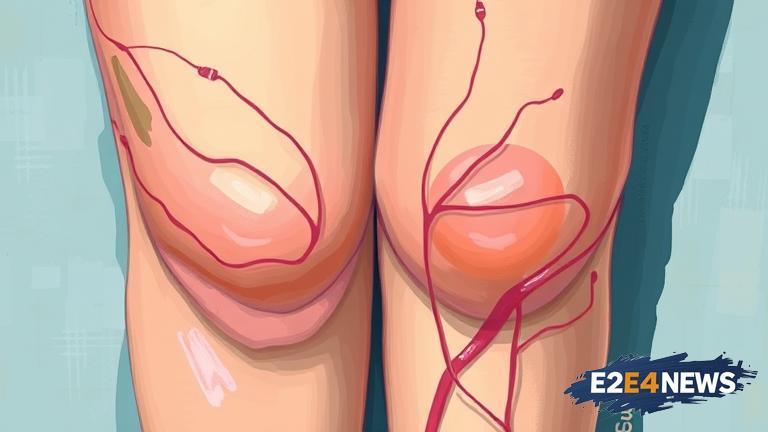Chronic venous insufficiency, also known as chronic venous disease, is a condition that affects millions of people worldwide. It occurs when the veins in the legs have problems sending blood back to the heart, leading to blood pooling and increased pressure in the veins. This can cause a range of symptoms, including swelling, pain, and skin changes. In severe cases, chronic venous insufficiency can lead to ulcers and other complications. The condition is often caused by valve problems in the veins, which can be due to a variety of factors, including genetics, age, and lifestyle. For example, people who are overweight or obese are more likely to develop chronic venous insufficiency, as are those who have a family history of the condition. Additionally, people who have jobs that involve standing or sitting for long periods of time are also at increased risk. Symptoms of chronic venous insufficiency can vary from person to person, but common signs include swelling, redness, and warmth in the affected leg. Some people may also experience pain or cramping in the leg, especially after standing or walking. In some cases, the skin may become thickened or discolored, and ulcers may develop. If left untreated, chronic venous insufficiency can lead to serious complications, including infection and amputation. Treatment for the condition typically involves lifestyle changes, such as losing weight and exercising regularly, as well as medical interventions, such as compression stockings and surgery. In some cases, medication may also be prescribed to help manage symptoms. It’s essential for people who are experiencing symptoms of chronic venous insufficiency to seek medical attention, as early treatment can help prevent complications and improve quality of life. Furthermore, research is ongoing to develop new and more effective treatments for the condition, including minimally invasive procedures and new medications. Overall, chronic venous insufficiency is a significant health concern that requires attention and awareness. By understanding the causes, symptoms, and treatment options for the condition, people can take steps to prevent and manage chronic venous insufficiency, and improve their overall health and well-being. Moreover, it’s crucial to note that chronic venous insufficiency can have a significant impact on a person’s daily life, causing discomfort, pain, and limitations in mobility. Therefore, it’s essential to seek medical help if symptoms persist or worsen over time. With proper treatment and care, people with chronic venous insufficiency can manage their symptoms and prevent complications, allowing them to live a healthier and more active life.
